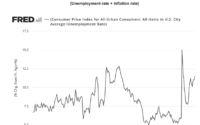Continuing Coverage of Regional Banking Crisis
10:10am ET | Feb 7, 2024
NYCB’s Reassurance on Liquidity Unconvincing as Stock Continues Fall, Down -10% Today
Despite New York Community Bancorp’s attempts to reassure investors with news of increased deposits and ample liquidity, its stock persisted in its downward trajectory, following a series of rating downgrades by Moody’s, Fitch, and a notable stock downgrade from J.P. Morgan. As MarketWatch reports, analysts highlight the bank’s “high risk profile” and recent executive departures as key factors exacerbating investor concerns. Citi analyst Keith Horowitz points out that despite the bank’s strong liquidity position, the shift in its deposit strategy and the junk status of its debt could further pressure the stock and complicate debt issuance efforts.

Why is this important for investors like you? NYCB isn’t a small-scale operation. It’s one of the largest regional banks in America. NYCB has:
- 420 branches nationwide
- Ranking as the 7th largest originator of residential mortgage loans,
- The 5th largest sub-servicer of mortgage loans across the country.
NYCB has roughly $84 billion in loans with a large portion allocated to multifamily housing. Out of this, $30 billion is in buildings where rents are controlled by rules to keep them affordable. Unfortunately, some new regulations have made these buildings less valuable, which is bad news for the bank.
Treasury Secretary Janet Yellen said, “we are monitoring current banking stresses very carefully… Commercial real estate is an area that we’ve long been aware could create financial stability risks or losses in the banking system…”
There is $2.2 trillion in commercial real estate debt coming due by 2027. These debts now face refinancing at significantly higher rates. How much of that debt is going to be defaulted on?
Jerome Powell seems to believe commercial real estate’s impact on banking has just begun, saying it’s a “problem we’ll be working on for years…”
8:15pm ET | Feb 6, 2024
WSJ: Moody’s Cuts NYCB to Junk, Extending Sharp Decline in Shares
Moody’s Investors Service has downgraded New York Community Bancorp’s credit rating to junk status, marking another setback for the already struggling lender. The downgrade to Ba2 from Baa3 is attributed to “financial, risk-management, and governance challenges,” following a surprising quarterly loss and dividend cut by NYCB. This announcement exacerbated a sharp decline in the bank’s stock value, which saw its lowest close since 1997 and a 15% drop after hours. NYCB’s acquisition of Signature Bank and subsequent losses in its commercial real estate portfolio have put it under intense scrutiny, especially as it now exceeds $100 billion in assets, inviting stricter regulatory and capital requirements. Amidst a broader crisis of confidence in the banking sector, NYCB asserts that its deposits remain stable, despite recent high-profile executive departures and a projected decrease in net interest income for 2024. (Original source)
3:24pm ET | Feb 6, 2024
Shares of NYCB, One of Nation’s Largest Regional Banks, Collapses -25%
4:02pm ET | Feb 2, 2024
The Next Banking Crisis?
GoldSilver’s own Alan Hibbard discusses New York Community Bancorp’s falling stock price and it’s move to slash its dividend by 70%.
10:12am ET | Feb 2, 2024
Surprise Losses Hit Regional Banks
Last year, about this same time, Silicon Valley Bank and Signature Bank imploded sending shockwaves through the financial sector. Now, the would-be savor of Signature Bank, New York Community Bancorp that acquired its assets, is reporting massive losses on its commercial property loans. Its stock plummeted earlier this week…
NYCB Shares Drop -44%, Taking Others With It, Reminiscent of Last Year’s Regional Bank Collapse

And NYCB is not alone… banks in the US, Asia, and Europe are all facing mounting losses. It appears we’re in the early innings of this story. In fact, billionaire Barry Sternlicht sees more than $1 trillion in losses coming in the U.S. commercial property sector that is under pressure from soaring borrowing costs (persistently high interest rates) and plunging prices (slumping demand for offices).
For those of us with portfolios to protect and financial plans, now is the time to shore up our savings against any potential crisis that could be coming. Particularly in a tumultuous election year…
You Need Portfolio Insurance
And we’re not talking about FDIC insurance. You need something banks can’t touch… something outside the walls of our volatile financial system… something that has been proven to help preserve and grow your wealth through good times and bad. Throughout history, holding physical gold bullion has acted as one of the best forms of insurance for an investor’s portfolio against unforeseen events. That’s because gold is insurance in its purest form. Gold doesn’t get its value from the government. It’s an asset you can see and touch that’s acted as a store of value all over the world for thousands of years.
Just like insurance, when it comes to gold, a little goes a long way. It doesn’t take much gold in your portfolio to hedge against what’s happening in the rest of the market. You don’t need to drastically change your investment strategy. BUT you do need to take responsibility for your portfolio because no one else will. If you’re not holding precious metals like gold and silver, you’re probably uninsured. That never ends well. Once you hedge your portfolio with precious metals, you’re golden.
What are you waiting for? Buy gold (and/or silver).
9:31am ET | Jan 25, 2024
The Looming Disaster in Commercial Real Estate Explained – Mike Maloney
Explore the unfolding crisis in commercial real estate with Mike Maloney and Todd Sachs as they discuss the challenges faced by property owners, the risks associated with refinancing in a changing market, and the potential pitfalls of government interventions. Learn about the impact of rising interest rates, the distinction between recourse and non-recourse borrowers, and the controversial plan to convert office buildings into residential spaces. Gain insights into the complexities of the current real estate landscape and the potential consequences for both investors and the broader economy.
[ad_2]
Source link


